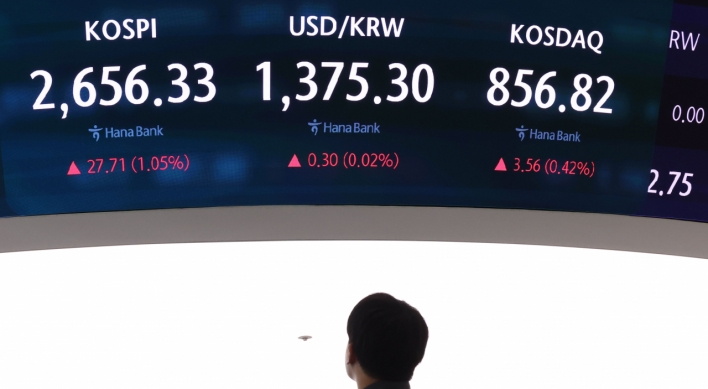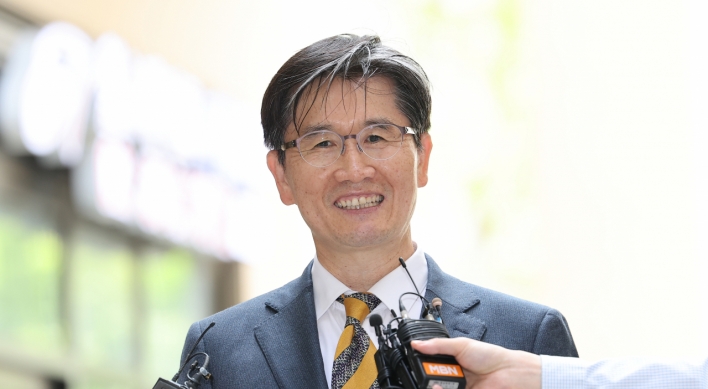[Charles J. Murray] What we need to hear about transition to EVs
By Korea HeraldPublished : Sept. 25, 2023 - 05:30
With the coming of the annual National Electric Drive Week, we are again likely to hear politicians and proponents sing the praises of electric vehicles. EVs, we will be told, are going to change life because they are cleaner, easier to maintain and fun to drive.
But here’s what we should also be discussing, although we probably won’t: There’s a giant transition on the horizon. Sixty countries, including the entire European Union, are calling for a complete ban on combustion cars starting in 2035. In the US, 15 states have now joined in, and more could follow. So it would be nice if the governors of the other states would tell us where we stand.
Given this looming transition, the following matters also need to be addressed:
-- For most Americans, there’s still a cost issue. According to the 2020 US census, the average annual American household income is $67,521 per year. Yet the average income for an owner of a Tesla Model 3, Tesla’s lowest-priced car at a base of more than $40,000, is $133,879 per year -- approximately twice that of the average American. Such statistics suggest that the EV is still a product for the wealthy.
EV proponents argue that the cost of the vehicles will keep coming down, much like the costs of personal computers, cellphones and flat-screen TVs once did. But that analogy is demonstrably flawed. The cost of PCs and mobile phones dropped dramatically over many years because they obeyed an economic observation known as Moore’s law. Moore’s law called for semiconductor costs to fall by roughly half every two years or so, as manufacturers packed more and more transistors onto integrated circuits. And that worked wonderfully for PCs, phones and TVs. But EV batteries will never obey Moore’s law because they aren’t electronic products. Their economies of scale are based on chemistry and thermodynamics, not on semiconductor manufacturing.
In truth, the price of lithium-ion batteries will be based, not on Moore’s law, but on mining operations in countries outside the US. Lithium is mined in South America and Australia. Cobalt comes from the Democratic Republic of the Congo. Manganese is mainly from South Africa. Nickel is mined in Indonesia, and graphite in China. All of these minerals, which are critical to battery production, are then processed in China. Will mining and processing costs in those countries fall? No one knows.
If costs don’t come down, we’ll end up with a product that still appeals mostly to wealthy buyers. Automakers, especially those who’ve announced plans to discontinue the internal combustion engine in the next 12 years, need to tell us what will happen to $25,000 entry-level vehicles.
-- Fast-charging is an even bigger challenge than we’ve been told. Everyone knows that public charging infrastructure is inadequate today, but one statistic that’s been largely hidden from view is that 88 percent of today’s public charging stations support only Level 2 charging, according to a study by US News & World Report. What does that mean? It means that recharging will likely take between four and 10 hours, even at public charging stations. As for those 30-minute fast-charge stations we keep hearing about -- good luck finding them.
Public funding, of course, will help municipalities build more charging stations. But how soon? Bear in mind that new fast-charging stations typically cost between $470,000 and $750,000 apiece, according to the Institute of Electrical and Electronics Engineers. And we need hundreds of thousands of them.
Some proponents argue that public charging is not a dilemma because 80 percent of charging takes place at home. Fair enough, but are consumers aware of how long home-charging takes? With a standard 110-volt charging outlet, they’re looking at 40 to 60 hours to recharge an EV battery. With a specially installed 220-volt line, it’s still four to 10 hours. And for those who are thinking of bypassing these problems by installing a 30-minute fast-charger at home, forget it. Not allowed.
All of this is way too confusing for consumers, largely because there are so many different types of chargers operating at varying power levels. Moreover, there’s no standard battery size. That’s why the public needs more explanation.
-- There’s a looming grid problem. If we flipped a switch today and went all-electric, would we have enough electric-generating capacity? Opinions vary, but many experts are doubtful, including Tesla CEO Elon Musk, who has publicly stated that we won’t have enough grid capacity.
But even if we had enough juice, there would still be problems. In Palo Alto, California, where the transition is already gaining momentum, city engineers have learned that EVs will boost peak electrical loads, overloading 95 percent of residential transformers. Without improvement, those transformers could start overheating, according to a 2020 Palo Alto electrification impact study. Moreover, many of today’s transmission lines might be insufficient.
So if the transition is as big as many believe, we may need millions of newer, bigger transformers and millions of bigger power poles to hold them up. Also, miles and miles of new power lines.
Are we ready for all this? Hard to say, since many of these matters are seldom discussed publicly.
So, yes, EVs are clean and fun to drive. But if we’re making a forced transition to electric cars, we need to know a lot more than that.
Charles J. Murray
Charles J. Murray is a Chicago-area author who writes about the history of technology. His latest book is “Long Hard Road: The Lithium-Ion Battery and the Electric Car.” He wrote this for the Chicago Tribune. -- Ed.
(Tribune Content Agency)
-
Articles by Korea Herald










![[Weekender] How DDP emerged as an icon of Seoul](http://res.heraldm.com/phpwas/restmb_idxmake.php?idx=644&simg=/content/image/2024/04/25/20240425050915_0.jpg&u=)

![[Today’s K-pop] NewJeans' single teasers release amid intrigue](http://res.heraldm.com/phpwas/restmb_idxmake.php?idx=644&simg=/content/image/2024/04/26/20240426050575_0.jpg&u=)






![[Herald Interview] Mistakes turn into blessings in street performance, director says](http://res.heraldm.com/phpwas/restmb_idxmake.php?idx=652&simg=/content/image/2024/04/28/20240428050150_0.jpg&u=)
